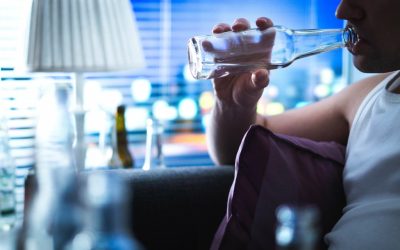Relapse Prevention (RP) is another well-studied model used in both AUD and DUD treatment (Marlatt & Gordon, 1985). In its original form, RP aims to reduce risk of relapse by teaching participants cognitive and behavioral skills for coping in high-risk situations (Marlatt & Gordon, 1985). More recent versions of RP have included mindfulness-based techniques (Bowen, Chawla, & Marlatt, 2010; Witkiewitz et al., 2014). The RP model has been studied among individuals with both AUD and DUD (especially Cocaine Use Disorder, e.g., Carroll, Rounsaville, & Gawin, 1991); with the largest effect sizes identified in the treatment of AUD (Irvin, Bowers, Dunn, & Wang, 1999).
Seemingly irrelevant decisions (SIDs) are those behaviours that are early in the path of decisions that place the client in a high-risk situation. For example, if the client understands that using alcohol in the day time triggers a binge, agreeing for a meeting in the afternoon in a restaurant that serves alcohol would be a SID5. The AVE was introduced into the substance abuse literature within the context of the “relapse process” (Marlatt and Gordon 1985, p. 37). Relapse has been variously defined, depending on theoretical orientation, treatment goals, cultural context, and target substance (Miller 1996; White 2007).
2. Controlled drinking
Oxford English Dictionary defines motivation as “the conscious or unconscious stimulus for action towards a desired goal provided by psychological or social factors; that which gives purpose or direction to behaviour. Motivation may relate to the relapse process in two distinct ways, the motivation for positive behaviour change and the motivation to engage in the problematic behaviour. This illustrates the issue of ambivalence experienced by many patients attempting to change an addictive behaviour. There are many relapse prevention models used in substance abuse treatment to counter AVE and give those in recovery important tools and coping skills.
Given the abstinence focus of many SUD treatment centers, studies may need to recruit using community outreach, which can yield fewer participants compared to recruiting from treatment (Jaffee et al., 2009). However, this approach is consistent with the goal of increasing treatment utilization by reaching those who may not otherwise present to treatment. Alternatively, researchers who conduct trials in community-based treatment centers will need to obtain buy-in to test nonabstinence approaches, which may necessitate waiving facility policies regarding drug use during treatment – a significant hurdle. Future research with a data set that includes multiple measures of risk factors over multiple days can help in validating the dynamic model of relapse. Elucidating the “active ingredients” of CBT treatments remains an important and challenging goal, Also, integration of neurocognitive parameters in relapse models as well as neural (such as functional circuitry involved in relapse) and genetic markers of relapse will be major challenges moving ahead19.
Abstinence Violation Effect (AVE)
Ecological momentary assessment, either via electronic device or interactive voice response methodology, could provide the data necessary to fully test the dynamic model of relapse19. Helping clients develop positive addictions or substitute indulgences (e.g. jogging, meditation, relaxation, exercise, hobbies, or creative tasks) abstinence violation effect also help to balance their lifestyle6. Global self-management strategy involves encouraging clients to pursue again those previously satisfying, nondrinking recreational activities. In addition, relaxation training, time management, and having a daily schedule can be used to help clients achieve greater lifestyle balance.
- Both negative and positive expectancies are related to relapse, with negative expectancies being protective against relapse and positive expectancies being a risk factor for relapse4.
- The negative emotions and cognitive dissonance that can happen after a lapse or relapse is known as the abstinence violation effect (AVE).
- This model both accelerated the spread of AA and NA and helped establish the abstinence-focused 12-Step program at the core of mainstream addiction treatment.
- The results of the Sobell’s studies challenged the prevailing understanding of abstinence as the only acceptable outcome for SUD treatment and raised a number of conceptual and methodological issues (e.g., the Sobell’s liberal definition of controlled drinking; see McCrady, 1985).
- By reframing lapses as learning opportunities and teachable moments, cultivating self-compassion, and seeking support, individuals can navigate these challenges more effectively, increasing their chances of leading a healthier lifestyle.
These data suggest that non-disordered drug use is possible, even for a substantial portion of individuals who use drugs such as heroin (about 45%). However, they do not elucidate patterns of non-disordered https://ecosoberhouse.com/ use over time, nor the likelihood of maintaining drug use without developing a DUD. It is essential to understand what individuals with SUD are rejecting when they say they do not need treatment.
